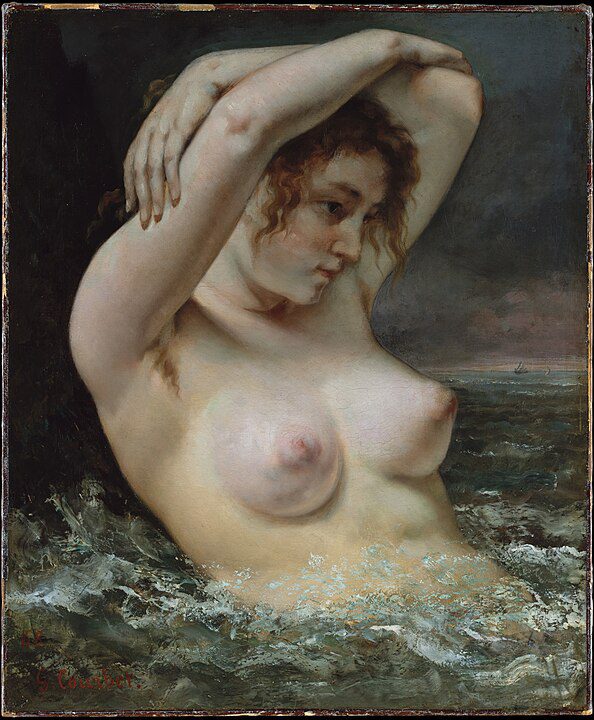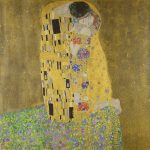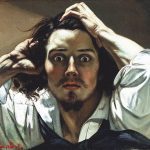
When Gustave Courbet, the rebellious French painter, met Joanna Hiffernan, the Irish beauty, it was a meeting that would change his artistic life forever. Courbet, known for his daring realism and defiance of traditional norms, had already made waves in the art world. But with Hiffernan, he found not just a muse, but a kindred spirit. Their relationship sparked controversy, inspiration, and some of the most intimate works in Courbet’s career.
Who exactly was Joanna Hiffernan? She wasn’t just any model. She had striking red hair, a commanding presence, and a magnetic personality that pulled people into her orbit. Raised in London, she had a free-spirited nature that was rare for women of her time. It’s no wonder Courbet was drawn to her. Their meeting felt like a clash of two wild forces—Courbet, the outspoken artist who flouted conventions, and Hiffernan, the vivacious model who brought out the best in those she worked with.
But was it just her beauty that captivated him? Many think it was much more. Courbet, whose life was marked by bold decisions, found in Hiffernan someone who understood his artistic vision, someone who could match his passion for life and art. And as their personal relationship blossomed, so did their creative collaboration.
Hiffernan: Beyond the Muse
Often, when we think of muses, we imagine silent figures that inspire from the shadows. But Hiffernan was anything but silent. While she modeled for Courbet’s paintings, she played an active role in the creation of his art. She wasn’t just a pretty face to paint—she was deeply involved in his creative process, offering her own insights and interpretations. Some might say she even influenced the way Courbet painted women.
Her presence in Courbet’s work was not just as a passive subject. She embodied the spirit of the independent, modern woman. In a time when women’s roles were largely restricted, Joanna stood out. She was opinionated, strong-willed, and certainly not afraid to break societal expectations. This is part of what made her so appealing to Courbet, who had always been a vocal critic of the establishment.
One of Courbet’s most famous paintings featuring Hiffernan is Jo, The Beautiful Irish Girl. The piece is striking, not just for its attention to detail but for the raw emotional depth that radiates from Hiffernan’s gaze. It’s almost as if Courbet painted her not just with his brush, but with his heart. In many ways, Hiffernan became the embodiment of Courbet’s desire to portray real life, unfiltered and unidealized.
But their relationship wasn’t just about art. It was clear they had a personal bond that went far deeper than the studio. For Courbet, Hiffernan wasn’t just an artistic collaborator; she was someone he deeply admired, perhaps even loved.
The Scandal of the Origin of the World
No discussion about Courbet and Hiffernan can be complete without mentioning The Origin of the World. This painting is one of Courbet’s most controversial works, even by today’s standards. It’s a highly realistic portrayal of a woman’s body, raw and unapologetically direct. Many have speculated that Hiffernan posed for the painting, though there’s no solid proof. Regardless, the scandal surrounding the work has kept it in the spotlight for decades.
When it was first painted, The Origin of the World was considered shocking, even obscene. The art world wasn’t ready for such an unfiltered portrayal of the female form. But Courbet wasn’t concerned with what people thought. He wanted to challenge perceptions, to make people uncomfortable, and to force them to confront the realities of human existence.
Whether Hiffernan posed for it or not, the painting certainly reflects the intense emotional and intellectual connection between the two. It’s a work that pushes boundaries, much like their relationship did. Courbet’s decision to paint such an explicit image speaks to his dedication to realism, but it also hints at his deep fascination with women—not just as subjects, but as complex, layered beings.
Even today, the painting provokes strong reactions. But perhaps that’s exactly what Courbet intended. He wanted people to question their views on art, beauty, and the female body. And with Joanna Hiffernan by his side, he was able to explore these themes in a bold, groundbreaking way.
The Influence of Their Affair on Courbet’s Art
It’s hard to deny that Courbet’s relationship with Hiffernan shaped his art in profound ways. Before they met, Courbet was already a well-established painter, known for his depictions of rural life and working-class people. His art had a gritty realism to it, a far cry from the polished, idealized subjects favored by other artists of the time. But with Hiffernan, Courbet’s work began to take on a more personal tone.
His portraits of her are striking for their intimacy. In paintings like Jo, The Beautiful Irish Girl, we don’t just see a model posing for a painter. We see a woman who is fully present, fully alive. There’s an emotional depth in these works that suggests Courbet wasn’t just capturing Hiffernan’s outer appearance—he was capturing her spirit. In doing so, he pushed the boundaries of what portraiture could be.
It wasn’t just in his portraits that Hiffernan influenced Courbet’s work. Their relationship seemed to ignite something in him, a passion for life that spilled over into his art. This is perhaps most evident in The Origin of the World. Though we may never know for certain whether Hiffernan was the model for the painting, it’s clear that the piece reflects the emotional intensity of their relationship. It’s raw, unfiltered, and unapologetically direct—just like Courbet and Hiffernan themselves.
Courbet and the Realist Movement
Courbet’s relationship with Hiffernan didn’t just influence his own work; it also had a broader impact on the Realist movement. At a time when many artists were still painting idealized versions of reality, Courbet was determined to show the world as it truly was. He rejected the romanticized landscapes and heroic portraits that were popular in favor of gritty, realistic depictions of everyday life.
Hiffernan, with her strong personality and independent spirit, fit perfectly into this vision. She was not the demure, passive woman often depicted in 19th-century art. She was bold, unafraid to express herself, and willing to challenge societal norms. This made her the perfect muse for Courbet, whose art was all about breaking down barriers and challenging the status quo.
Their partnership was, in many ways, a reflection of the Realist ethos. Courbet wasn’t interested in creating art that conformed to traditional standards of beauty. He wanted to show the world in all its complexity, and Hiffernan, with her fierce individuality, was the ideal partner in this endeavor.
The End of Their Affair
As with many intense relationships, Courbet and Hiffernan’s partnership didn’t last forever. By the mid-1860s, their affair had come to an end. It’s unclear exactly why they parted ways, though some speculate that Courbet’s increasingly erratic behavior and financial difficulties may have played a role.
Despite the end of their romantic relationship, it’s clear that Hiffernan continued to have a profound influence on Courbet’s work. Even after they separated, he continued to paint her, suggesting that their bond, both personal and artistic, was not easily severed.
For her part, Hiffernan went on to model for other artists, including the American painter James McNeill Whistler. Though her relationship with Courbet may have ended, she remained a significant figure in the art world, continuing to challenge societal expectations and push the boundaries of what it meant to be a woman in 19th-century Europe.
Legacy of the Courbet-Hiffernan Partnership
The partnership between Gustave Courbet and Joanna Hiffernan left an indelible mark on the art world. Together, they created some of the most iconic works of the 19th century, pushing the boundaries of realism and challenging societal norms.
Courbet’s commitment to portraying life as it was, unfiltered and raw, was amplified by his relationship with Hiffernan. She wasn’t just a model; she was a collaborator, a muse, and a partner in his artistic vision. Her fierce individuality and willingness to break from convention made her the perfect counterpart to Courbet’s rebellious spirit.
While their romantic relationship may have been short-lived, the impact of their partnership on the art world is undeniable. Courbet’s portraits of Hiffernan are among his most intimate works, capturing not just her physical beauty, but the essence of her character. And though they may have parted ways, the influence they had on each other’s lives—and on the history of art—endures.
A Love That Transcends Time
In the end, the relationship between Gustave Courbet and Joanna Hiffernan was about more than just art or romance. It was about two people who found in each other a kindred spirit, someone who understood and supported their vision. It was a partnership that transcended the traditional boundaries of artist and muse, pushing both of them to new heights of creativity.
And while their love story may not have had a fairy tale ending, it left a lasting legacy. Courbet’s bold realism and Hiffernan’s independent spirit continue to inspire artists and art lovers alike, reminding us that true creativity comes not from conforming to expectations, but from breaking them.




